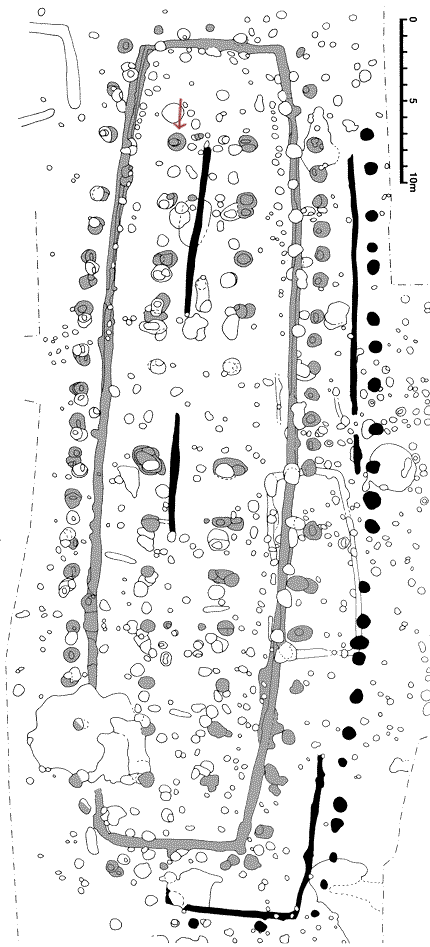
|
Archaeological
Plan of the Two Great Halls at Lejre Remains of the ninth-century Viking Age hall, in grey, sit over a less well-preserved seventh-century Migration Period hall, in black. Clearly visible are the outline of the walls and the rows of post holes from both interior supporting posts and exterior raking posts. The two halls, although separated by several centuries, appear to have been of very similar construction. The Viking Age hall reused a row of external raking post holes (marked by an arrow) from the older building. Incorporating existing post holes greatly simplified the construction of the new building and suggests that the later hall was built shortly after the demolition of the earlier one. The archaeology presents a picture of continuous habitation between at least two periods of massive construction. The site shows much evidence of repair over the centuries and some post holes were reused perhaps as many as five times. Cow, sheep, and pig bones found in post holes from the oldest hall carbon-14 date to around the year 660. Remnants of bone from the Viking Age building date to ca. 890. (By permission, Tom Christensen, Roskilde Museum). Index to illustrations
|
